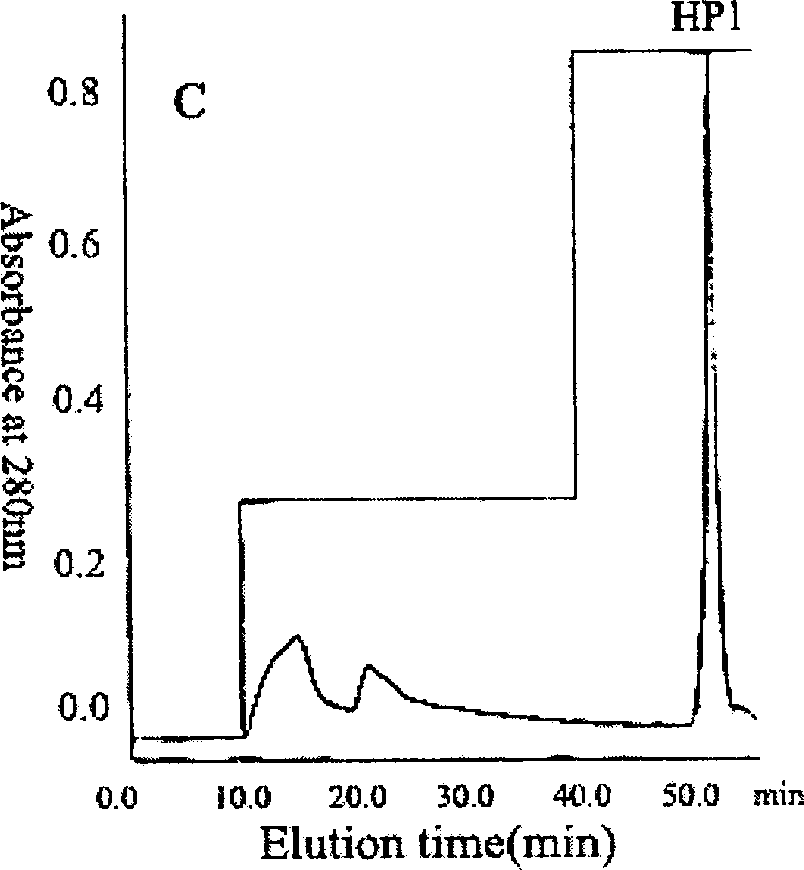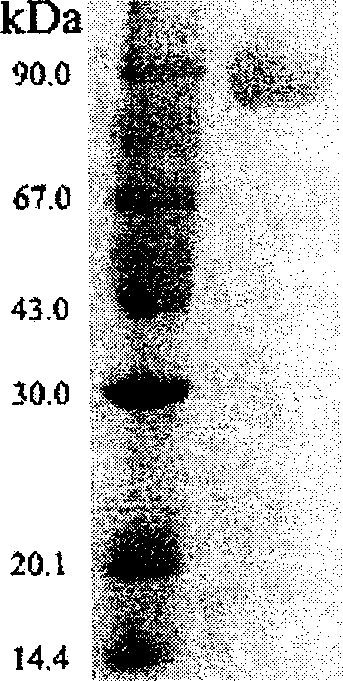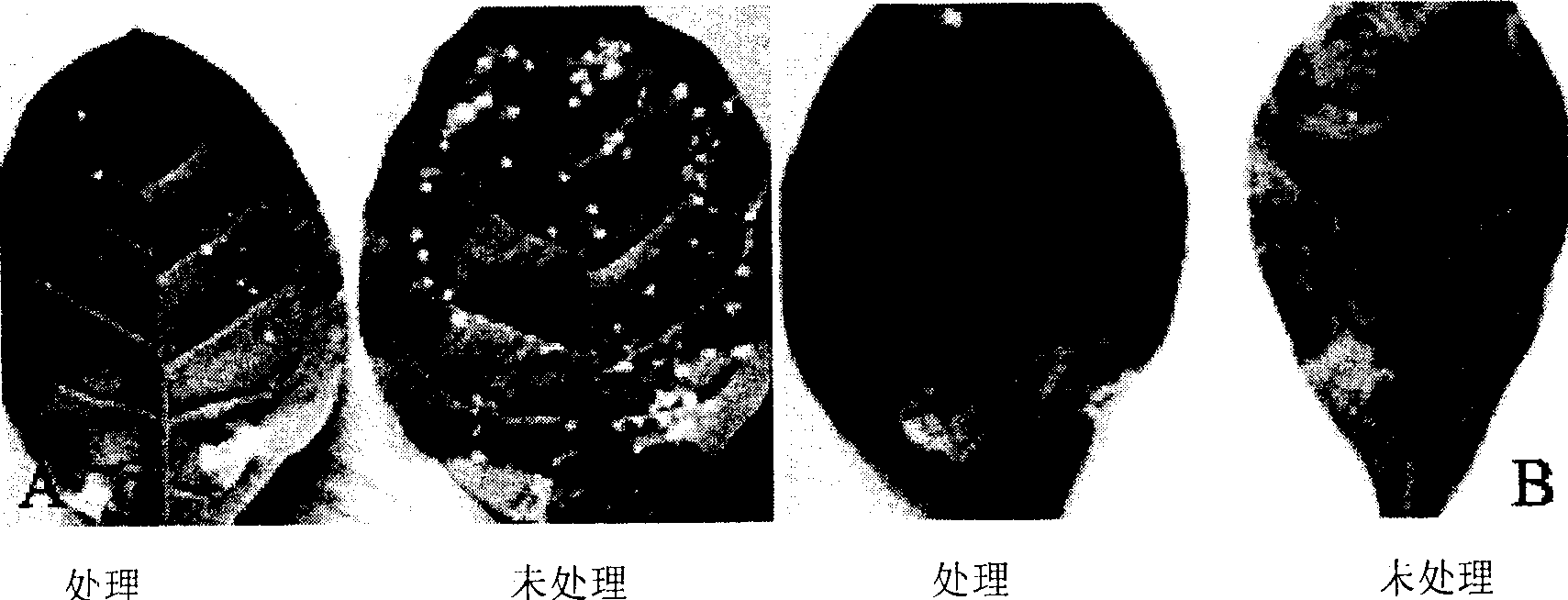Excition of inducing anti-disease ability of plant system
A technology for inducing plants and elicitors, applied in the field of biotechnology research, to achieve the effect of low concentration and strong biological activity
- Summary
- Abstract
- Description
- Claims
- Application Information
AI Technical Summary
Problems solved by technology
Method used
Image
Examples
Embodiment 1
[0015] Embodiment 1: the preparation method of 90kDa protein elicitor PB90 of cotton blight:
[0016] Cotton blight was cultivated in synthetic culture medium for 10 days, filtered with double-layer filter paper, added ammonium sulfate to 80%, overnight at 4°C, centrifuged at 12000g for 10 minutes, collected protein precipitate, and washed with 1% volume of Tris.HCl (7.4 ) suspension.
[0017] Purified by fast protein liquid chromatography FPLC. Process: anion exchange chromatography, column SepharoseQFF, mobile phase: A, 20mmol / L Tris.HCl pH6.0; B, A+1mol / L NaCl; flow rate: 2.5ml / min, 30min gradient elution, collecting active peaks, The method for determining the activity peak is: after desalting the protein solutions in different collection tubes, dilute them 100 times, inject tobacco, and collect the components that can cause allergic necrosis of tobacco cells for further purification; hydrophobic interaction chromatography, Chromatographic column: Sepharose PHE HP; mobil...
Embodiment 2
[0018] Dilute the elicitor to 100pM, use a syringe with the needle removed, and inject it into the plant leaves along the back of the plant leaves. After 24 hours, the leaves at the injection site turn brown. After the elicitor treatment, until 15 days later, the plants are challenged to inoculate tobacco mosaic leaves Viruses, tobacco black shank bacteria, tobacco Ralstonia solanacearum, tobacco red spot bacteria, and cabbage anthracnose bacteria, etc., plants can show a systemic broad-spectrum disease resistance of up to 80% (induced resistance = number of control leaf lesions- The number of diseased spots on treated leaves / the number of diseased spots on control leaves×100%), the results showed that the elicitor-induced resistance effect obtained in this study could last for more than 15 days. image 3
Embodiment 3
[0020] Using immunogold labeling technique, it was proved that the elicitor was localized on the cell wall of Phytophthora. Figure 4
PUM
 Login to View More
Login to View More Abstract
Description
Claims
Application Information
 Login to View More
Login to View More - R&D
- Intellectual Property
- Life Sciences
- Materials
- Tech Scout
- Unparalleled Data Quality
- Higher Quality Content
- 60% Fewer Hallucinations
Browse by: Latest US Patents, China's latest patents, Technical Efficacy Thesaurus, Application Domain, Technology Topic, Popular Technical Reports.
© 2025 PatSnap. All rights reserved.Legal|Privacy policy|Modern Slavery Act Transparency Statement|Sitemap|About US| Contact US: help@patsnap.com



